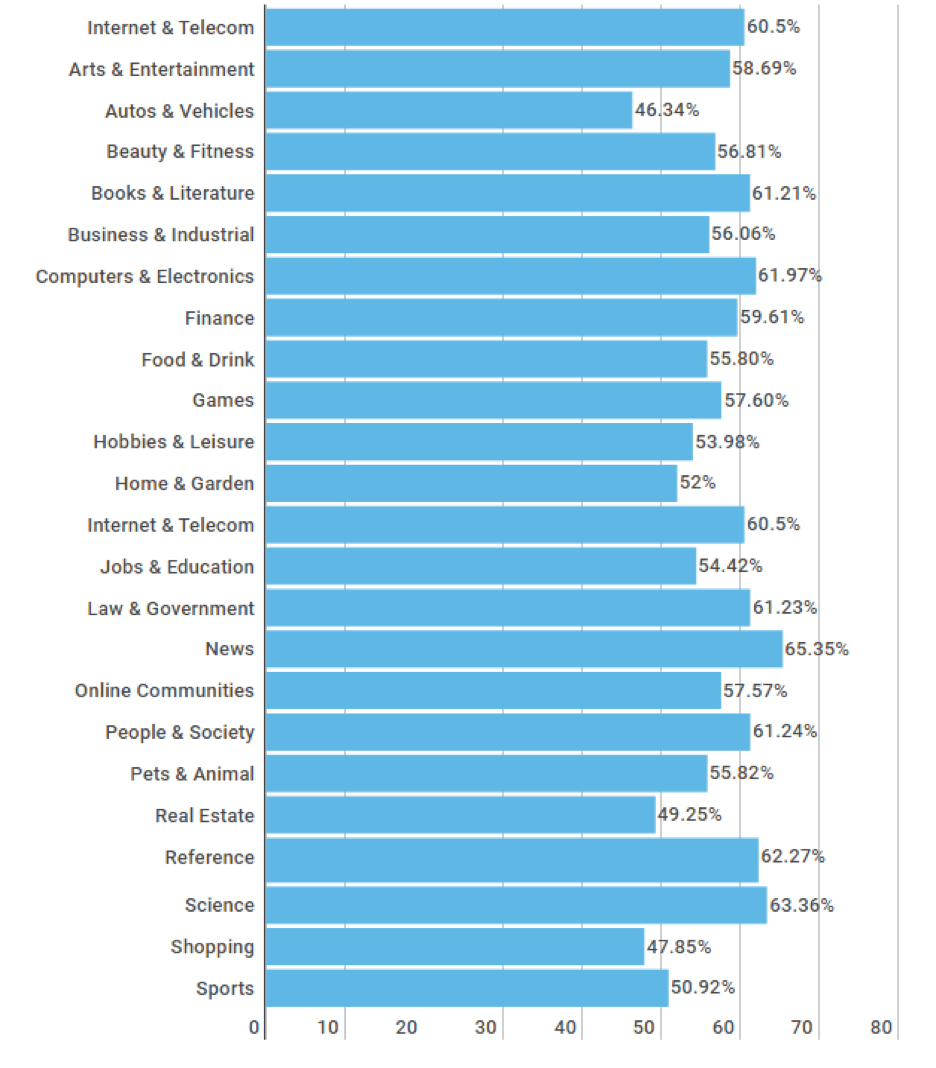Don’t Hate the Bounce Rate
There are so many different metrics in Google Analytics; deciphering what they all mean can be a challenge even to those with extensive knowledge of SEO. What most people take away from their Google Analytics is that high impressions, clicks, time on site, and page views are good, while a high bounce rate is bad. Let’s slow down for a second and look under the hood to see just how bounce rate is calculated, and discuss how a high bounce rate may not, in fact, be the worst number you see in your dashboard.
Google states that they do not take Google Analytics metrics into account in their ranking algorithm, and that those metrics do not affect your websites SERP placement. Google’s definition of bounce rate is “single-page sessions divided by all sessions, or the percentage of all sessions on your site in which users viewed only a single page and triggered only a single request to the Analytics server.”
It helps to visualize Google as the business that it is. Google’s customers are you, the user searching online, and their product is the web page results. Like any business, Google wants their customers to be satisfied so they keep coming back. Therefore, it is their ultimate goal to serve you the most precise and accurate websites when you are looking on their search engine. For example, if I am looking for “tacos near me” and the first 10 websites I’m shown are for sushi restaurants, I am going to get frustrated and take my business elsewhere, say Bing or Yahoo. Google stays the #1 search engine because it provides users with exactly what Google thinks they want, and even suggests what the user wants prior to the completed thought.
But how does Google DO that? Well, by crawling every website that exists and ranking it based upon many different factors: relevant keywords, quick loading speed, up-to-date content, metadescriptions, video content, and design elements just to name a few. Ultimately, when your site is crawled by Google, it is put into the algorithm that aligns with relevant terms users are searching for. If your site is the best match for that search term, up the SERP you go! While companies cannot pay to increase their organic listings, there are many ongoing SEO updates that can be made to your website to ensure that when Google crawls are recrawls your site, it is in the best shape to earn a top position.
With bounce rate being the number of times people leave a webpage without taking an action or engaging with the page divided by the number of visitors to that page, intuitively that would mean everyone bouncing off your page was dissatisfied or didn’t find what they were looking for (and we know now that Google frowns upon that). However, there are some cases where going to a page and leaving is not a negative, but in fact exactly what that page was made for! For example, if I am looking for tacos and Google provides me a list of restaurants on the SERP, I choose the one that I want and I click onto their page. Any great website would have the contact information front and center for me to access to take an additional step. In this case, the purpose of me looking for tacos near me is so I can call the restaurant and place a to-go order. I don’t need to dig around on the site or go through several pages to find that information. I landed on the home page, I saw the phone number, and I placed the call. By exiting off the page after I found what I needed, my session would be considered a bounce, when in all actuality, it was a conversion.
On the other hand, if a website’s page is in need of some updates, we can use the bounce rate we see in Google Analytics to provide us with more insight as to where and why people are leaving the website. If the majority of a website’s pages have a generally low bounce rate, but one page stands out as the place where most people bounce off, that could be telling us that pages needs some updates or reconfiguration. Keep in mind that bounce rate is computed when web surfers land on that precise page from an external source (i.e. Facebook, Google, Bing) and not calculated when the user clicks an internal link within the website.
So what is a ‘good’ bounce rate? According to Google Benchmarks Data, it’s all over the board depending upon the industry. See the table below to view the wide range of healthy bounce rates. If you are in the News Industry and your website has a bounce rate of 55%, that’s great! If you are in the Automotive Industry, not so much. Keeping in mind the industry benchmarks can give you a better understanding as to how you rate versus your competitors.
Ultimately, understanding and staying on top of your websites analytics is key to ensuring consistent top performance. Unfortunately, SEO is not a “set it and forget it” tactic that can be done once and never looked at again. Keeping an eye on your page’s conversions, impressions, click-throughs, bounce rates, sessions, page views, and more shows you where and what your visitors are doing on your site. With that knowledge, you can tailor your site and your digital marketing efforts to exactly what your visitors want, just like Google does for our search intentions (which we at AFFIRM can help with)! In conclusion, the top three takeaways are:
- Bounce rates tell us a lot about if your website is giving the user the information they are looking for, use these analytics to make changes.
- Based upon industry specific benchmarks and the purpose of your webpage, high bounce rates are not necessarily always a bad thing.
- SEO needs to be monitored long term with consistency, the functionality of your website is just as important as its content.
With that being said, now that you have read the blog and soaked up some SEO knowledge, feel free to bounce off to another site. Our work here is done.





